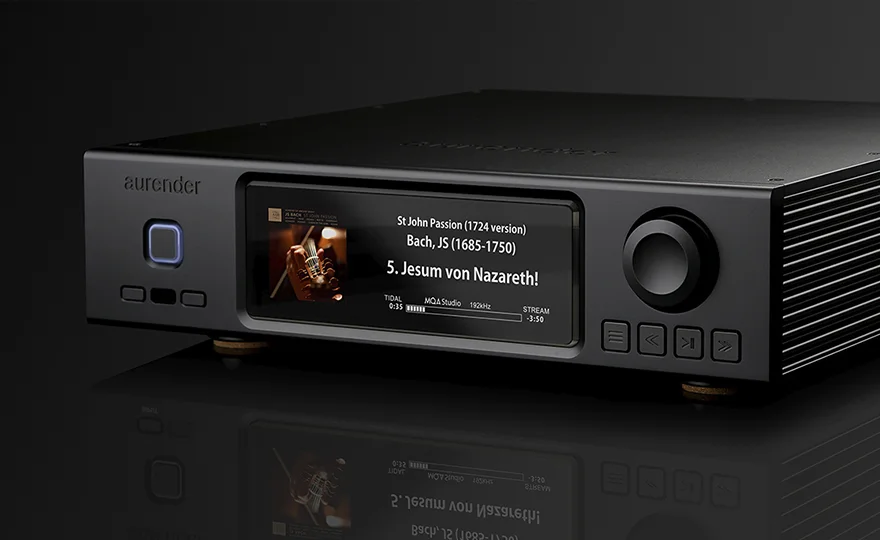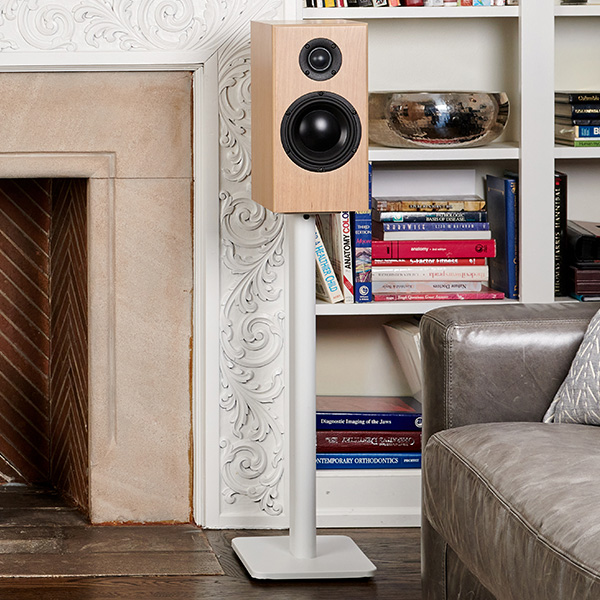For decades, audiophiles have fiercely debated the merits of physical media versus digital formats. From spinning a pristine copy of Dire Straits’ “Love Over Gold” on vinyl to cueing up Pat Metheny’s “Unity Village” in high-res on Qobuz, the pursuit of sonic perfection takes many forms.
In today’s world of high-end audio, streaming music has become more convenient and accessible than ever—but does it sound as good as physical formats like vinyl, CDs, or even SACDs? And more importantly, what gear do you need to get the best from each format?
Let’s explore the pros and cons of streaming music versus physical media, what equipment is required for each, and which streaming platforms deliver the most audiophile-friendly sound.
Physical Media vs. Streaming: What’s the Difference?
At its core, the debate between streaming and physical media comes down to fidelity, convenience, and emotional connection.
✅ Pros of Physical Media:
- Superior Sound (in some cases): High-quality vinyl pressings and CDs played on high-end gear can deliver incredibly rich, detailed sound with wide dynamic range.
- Tactile Experience: Holding an album like Steely Dan’s “Aja” or Rickie Lee Jones’ debut LP creates a ritualistic, immersive listening experience.
- Ownership: Once you buy the album, it’s yours—forever, no monthly fees or fear of the album being removed from a streaming catalogue.
❌ Cons of Physical Media:
- Inconvenience: Requires manual storage, handling, and setup.
- Cost and Availability: Collecting high-quality physical media can get expensive, and rare records may be hard to find.
- Fragility: Vinyl scratches and CD rot are real concerns for long-term playback quality.
✅ Pros of Streaming:
- Unmatched Convenience: Millions of songs at your fingertips, instantly playable across devices.
- Affordable Access: Subscription models are cheaper than building a large CD or vinyl collection.
- Advanced Tech: Hi-res streaming, lossless formats, and smart curation features are improving sound and discovery.
❌ Cons of Streaming:
- Compression (on some platforms): Lossy formats like MP3 and AAC sacrifice audio fidelity for convenience.
- Internet Dependency: You’ll need a solid connection for seamless high-res playback.
- Lack of Ownership: You don’t truly “own” streamed music—catalogs can change without warning.
Audio Equipment Needed for Streaming vs. Physical Media
🔊 Streaming Setup
To get the best sound from a streaming source, audiophiles typically use:
- Network Streamer or Music Server: Devices like the Bluesound Node, Aurender, or Roon Nucleus can decode high-res formats and manage your music library.
- DAC (Digital-to-Analog Converter): A high-quality DAC is crucial to converting digital files into lush analog sound. Look for support for PCM and DSD if you’re diving into hi-res.
- Integrated Amp / Preamp / Power Amp: Match your gear with your speakers’ sensitivity and your room’s acoustics.
- Good Wi-Fi or Ethernet Connection: Streaming 24-bit/192kHz files over Wi-Fi requires reliable bandwidth.
💡 Tip: If you’re playing something atmospheric like Nils Frahm’s “Says” or Agnes Obel’s “Familiar,” make sure your streamer supports gapless playback for a seamless experience.
📀 Physical Media Setup
- Vinyl:
- Turntable with Quality Cartridge (e.g., moving coil or moving magnet)
- Phono Preamp
- Amplifier and Loudspeakers
- Anti-static Brush, Record Cleaning Kit, and Proper Storage
- CD/SACD:
- Dedicated CD Transport or Universal Disc Player
- External DAC (if your player supports digital out)
- Amp and Speakers
- Reel-to-Reel (for the ultra-purist):
- Vintage or modern tape machines and pre-recorded tapes (e.g., The Alan Parsons Project’s “I Robot” is available in open-reel format for true analog heads).
Each setup has unique requirements, but both benefit from quality amplification and acoustically capable speakers.
Audiophile-Approved Streaming Services: Pros & Cons
Here’s a breakdown of the most popular streaming services for audiophiles, including sound quality, format support, and music discovery features.
1. Qobuz
Website: https://www.qobuz.com
Pros:
- Offers 24-bit/192kHz FLAC streaming
- Great editorial content and album reviews
- Huge hi-res download store
Cons:
- Not available in all countries
- Slightly dated app UX
Audiophile pick: Perfect for streaming Hiromi Uehara’s live piano jazz in high resolution.
2. TIDAL
Website: https://www.tidal.com
Pros:
- Offers FLAC Lossless and Hi-Res (24-bit up to 192kHz)
- Curated playlists and artist exclusives
- TIDAL Connect for seamless device control
Cons:
- MQA (now deprecated) was once controversial
- More expensive HiFi Plus tier for best quality
Audiophile pick: Crank up Run the Jewels’ “A Few Words for the Firing Squad” in full 24-bit resolution for dramatic dynamics.
3. Apple Music
Website: https://music.apple.com
Pros:
- Lossless and Hi-Res ALAC support up to 24-bit/192kHz
- Immersive Spatial Audio (Dolby Atmos)
- Vast global catalog
Cons:
- Hi-Res playback requires an external DAC and Apple device
- Limited support for non-Apple platforms
Audiophile pick: Listen to Róisín Murphy’s experimental electro-pop in Lossless for crisp imaging and clarity.
4. Amazon Music Unlimited
Website: https://music.amazon.com
Pros:
- Includes HD (16-bit/44.1kHz) and Ultra HD (up to 24-bit/192kHz)
- Integrated with Alexa devices
- Competitive pricing
Cons:
- App is less intuitive than competitors
- Metadata can be inconsistent
Audiophile pick: Spin Ben Howard’s acoustic ballads in Ultra HD for an intimate, lifelike performance.
5. Spotify
Website: https://www.spotify.com
Pros:
- Massive library and best-in-class playlists
- User-friendly interface
- Spotify Connect for easy casting
Cons:
- No lossless support yet (though “Spotify HiFi” is still in limbo)
- Not suitable for critical listening
Audiophile pick: Enjoy background tunes like Khruangbin or Men I Trust, but don’t expect hi-res fidelity.
So, Which One is Better?
The answer depends on your listening priorities.
If you’re the kind of person who closes their eyes and gets lost in Sufjan Stevens’ “Fourth of July” on a quiet evening, physical media—especially vinyl or SACD—might provide the depth and warmth you crave.
But if you want unlimited access, portability, and increasingly competitive sound quality, streaming platforms like Qobuz and TIDAL HiFi Plus are now legitimate contenders in the audiophile space.
For most modern music lovers, a hybrid setup offers the best of both worlds: streaming for everyday listening and physical formats for focused sessions or treasured albums.
Final Thoughts
Whether you swear by the warm crackle of vinyl or revel in the convenience of high-resolution streaming, the goal remains the same: to experience music in its most powerful and moving form.
Streaming has come a long way—today’s audiophiles no longer have to compromise fidelity for convenience. As you refine your system and explore your music collection—whether it’s digital or analog—what matters most is how deeply you connect with the sound.
🎧 Curious to learn more about building the perfect high-end listening system or improving your speaker setup?
Explore more articles in our News + Reviews section:
👉 https://totemacoustic.com/news-and-reviews

